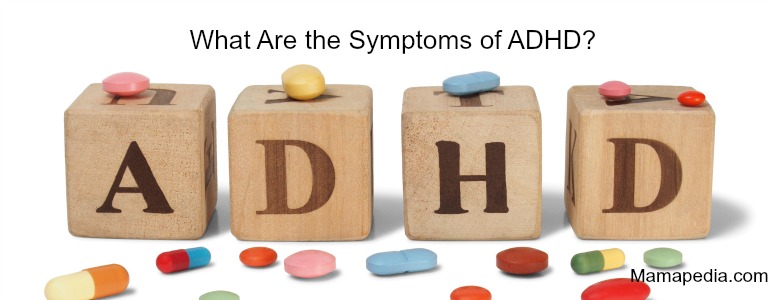
What Are the Symptoms of ADHD?
Many parents wonder if their child has ADHD, but they have a difficult time being able to decipher what is normal and abnormal behavior. The truth is that diagnosing a child with ADHD takes time, patience, and thoroughness.
“When it comes to ADHD diagnosis, we don’t exactly have a blood test. It’s based on observation and there’s no conclusive diagnosis,” noted Anna Stewart, a special needs resource guide for Empowering Solo Moms Everywhere (ESME). In addition to helping the online community there, she has a son with ADHD. “The process is a questionnaire that is meant to be completed by different adults in different settings, by parents, teachers, etc., to see if there’s consistent reporting of the concerning behavior from multiple perspectives.”
With that information in the back of your mind, consider the following symptoms of ADHD and how they might apply to your own child. If you suspect your child may have ADHD, move forward by broaching the topic with your doctor.
Chatty, Loud, and Hyperactive
Many children are chatty, loud, and hyperactive at some point or another. So how do you tell the difference between a child exhibiting “normal kid behavior,” and one who has ADHD?
“The trick to identifying ADHD in young children is not just to identify certain behaviors, but to notice that these behaviors are atypical,” said Julia Liu, ESME’s resource guide for public assistance. She is also raising a song diagnosed with ADHD. “[For example], running in the hallways is normal for small children and once corrected, most will attempt not to do it. Climbing in the windowsills is a much higher level of activity and is not what one typically sees in a classroom.”
Additionally, they have a tendency to talk loudly without being aware of their volume, and they may talk quite a bit, she said. Children with ADHD of the impulsive, hyperactive sort will also often exhibit difficulty waiting their turn, they may interrupt their peers or teachers, and they may have trouble following multiple step directions.
“One way to differentiate between a child that has normal range excessive energy and a child that is exhibiting clinical range hyperactivity it to identify the degree of control that the child is able to have over his or her own behavior,” noted Dr. Aaron Montgomery, a clinical psychologist who works with children, adolescents, and families. “Kids with normal range hyperactivity are more easily redirected by parents and teachers, and able to exert more self-control over their behavior and down regulate their energy. On the other hand, kids with hyperactivity associated with ADHD have much more difficulty controlling and modulating their energy, which results in a number of ADHD symptoms, including excessive speech and constant fidgeting and squirming.”
Spacey and Inattentive
It’s important to note that ADHD may not be displayed so obviously. For example, a child may be quiet, but display inattentiveness by consistently losing track of their items or struggling to keep their desk, room, and personal spaces organized.
“Preschoolers, especially little girls, are often underdiagnosed because ADHD might actually be ADD, attentive deficit disorder, without the hyperactivity,” explained Stewart. “They could be an inattentive type — someone who daydreams, looks out the window, is not cued in, or doesn’t pay attention to what’s going on around them.”
Liu added, “If the child is more of an inattentive type ADHD, they may appear to not listen to you when you are talking, they may have difficulty with tasks that require attention to detail, and may become frustrated.”
Atypical Emotional Behavior
“While many parents are familiar with the obvious symptoms of ADHD — such as hyperactivity, impulsive, disorganization and forgetfulness — the subtle symptoms are less familiar to most parents and may go unnoticed or not be associated with ADHD by parents,” said Dr. Montgomery. “For example, as a function of impulsivity associated with ADHD, many kids also struggle with poor emotion regulation skills, which result in angry outbursts, bouts of tearfulness and difficulty learning to manage these feelings on their own.”
Two secondary and often subtle symptoms related to ADHD are low self-esteem and helplessness, said Dr. Montgomery.
“Often kids that are hyperactive receive a lot of negative feedback from adults and peers about their behavior — i.e. why can’t you stay your seat?”; “Stop moving!”; “Are you listening to me?”; and “What’s wrong with you?” — which can lead many kids with ADHD to develop an image of themselves as ‘a bad kid’ and an expectation that others will not be happy with their behavior,” he explained. “Learned helplessness may develop as kids with ADHD have repeated experiences of struggling with homework and other chores, and difficulty sustaining their attention and mental effort during these tasks. As a result of these negative experiences, they may start to believe that they cannot achieve success with these tasks and start to give up before they get started. This is learned helplessness.”
Final Note
If your child exhibits a range of the above symptoms across multiple environments — school, home, grandparents’ houses, and grocery stores —then it’s possible he or she has ADHD. Ultimately, though, it’s up to your child’s doctor to provide a diagnosis. From there, you can work as a team to strategize a game plan to help your child move forward.
_Wendy Rose Gould is a writer based in Phoenix, Arizona. She covers women’s lifestyle topics for numerous digital publications, including InStyle, xoVain, Refinery29, Revelist, PopSugar and ModCloth. You can follow her on "Twitter and Instagram or at WendyGould.com_